|
|
|
|
News The Project Technology RoboSpatium Contribute Subject index Download Responses Games Gadgets Contact <<< Plastic recycling with a blender Plastic powder (2) >>> Plastic powder with a grinderThe video about turning industrial plastic pellets into powderBuild instructionThe grinder shown in this chapter is just a "proof of concept" prototype with a rather inadequate material throughput. Therefore, I offer nothing but a rough assembly instruction without a parts list. A better version that is more practical will follow.For those who like to experiment, the 3D files are available as a download package. The parts should be printed from PET as PLA cannot withstand the temperatures. 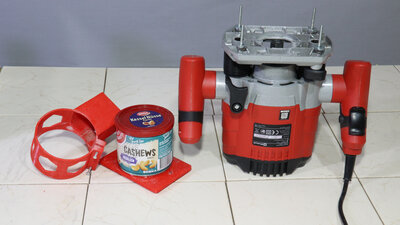
In the previous chapter I showed, how failed prints can be shredded into raw material for my direct extruder with a blender. I demonstrated that particles below a certain size could no longer be broken down further by a rotating blade. Because of that, industrial pellets could not be processed effectively with the blender. In order to be able to operate my direct extruder with fresh material, I constructed a low cost and quick-to-build device from a cheap router that can grind industrial pellets into fine plastic powder. 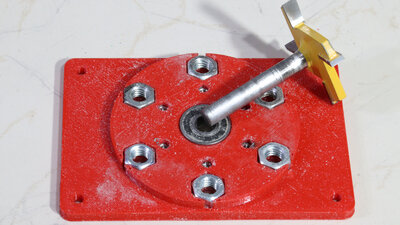
In my first design I used ball bearings type 608 with an inner diameter of 8mm. However, the 8mm shaft of my cheap milling tool didn't really fit into the 8mm opening of the cheap ball bearing. 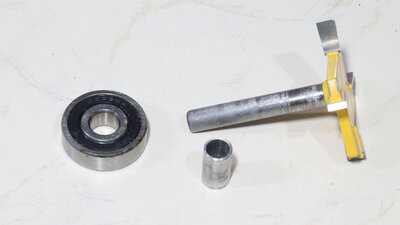
That's why I now use ball bearings type 6200 with a 10mm inner diameter and a 20mm long aluminum tube as an intermediate piece. The solution is not ideal because the shaft of the cutter has a bit backlash in the bearing. The package with the 3D files includes the bottom plates of both versions. 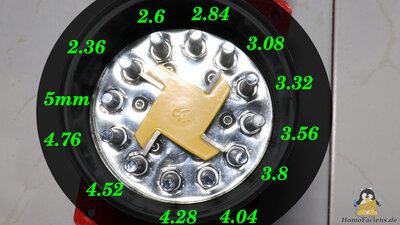
The motor drives a milling tool with 4 blades and a diameter of 50mm, which acts as a rotor. The stator consists of spirally arranged 6 millimeter screws. 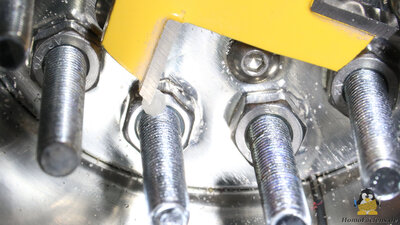
If a pellet gets between the stator and the rotating blade, the particle cannot escape and is therefore hit with full force by the blade. This scrapes or knocks off material from the pellet. In order for this to work, the corresponding particle must be clamped between the stator and rotor. If the gap is too large, the particle flies away from the blade, just like in the blender, without any material being removed. On the other hand, if the gap is too small, no particle can be trapped between the rotor and stator. This is the reason why the stator screws are arranged in a spiral: With this, gaps of different sizes are formed between the stator and rotor. Since the pellets become smaller and smaller during the grinding process, there is always a gap somewhere between which this particle can continue to be clamped and thus shredded. 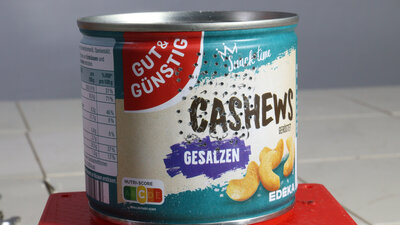
To remove the dust from the inside, there is a sieve on the outside wall: This consists of 1mm holes in the can wall. 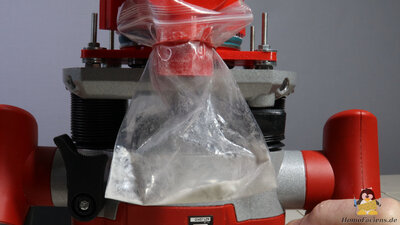
Since those dust particles are the desired end product, these are directed to a plastic bag. Machine parameters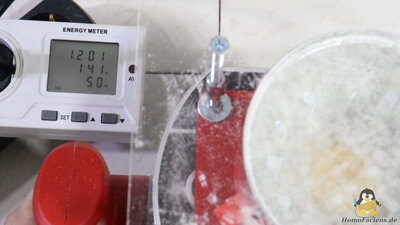
Let's take a look at the machine parameters, although these should not be overestimated for the "proof of concept" prototype. The milling motor runs at the lowest level and consumes around 140W of electrical power. 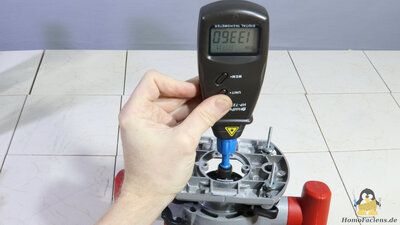
With this setting, the chuck rotates around 13,000 revolutions per minute when idle. 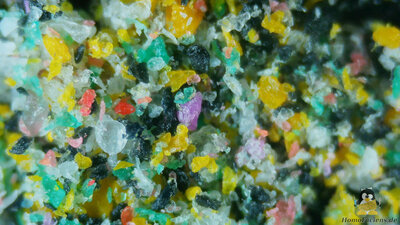
The grain size of the end product is significantly smaller than the granules obtained with the blender and sieve in the previous chapter. Things to be improved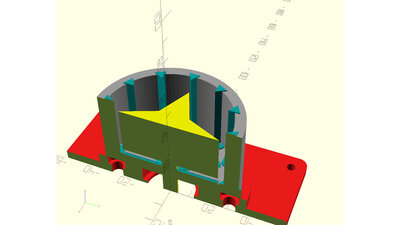
The following chapter is about the energy input required to grind plastic. With this knowledge, improvements can be implemented. <<< Plastic recycling with a blender Plastic powder (2) >>> News The Project Technology RoboSpatium Contribute Subject index Archives Download Responses Games Links Gadgets Contact Imprint |
|
|